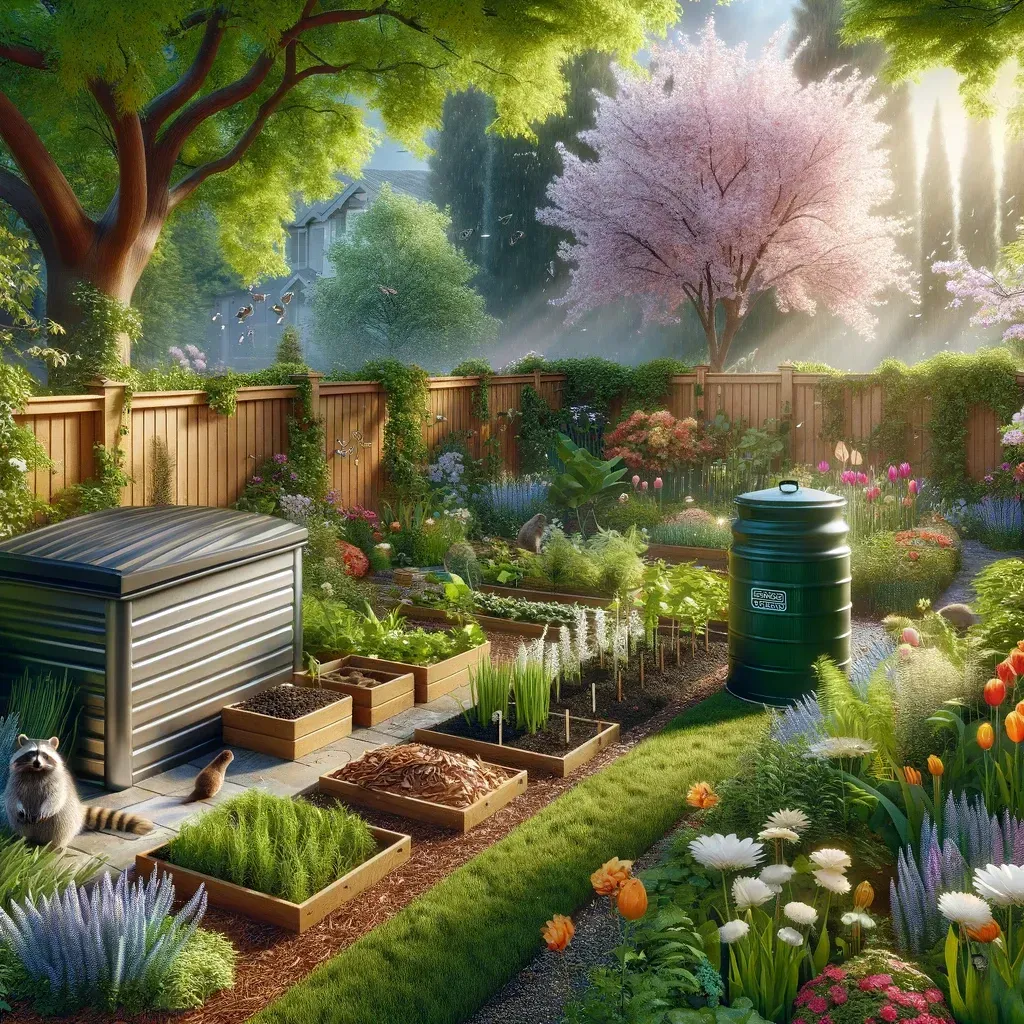
Preparing Your Garden for Pest-Free Spring Planting
Step 1: Know Your Enemy - Identifying Common Pests
Why It Matters: Different pests target different plants and require specific strategies to manage. Understanding which pests are most prevalent in your area can guide your preventive measures.
Step 2: Foundation of Health - Enriching Your Soil
Action Plan: Integrate compost and organic matter into your soil to boost its health. Healthy soil supports robust plants that are better equipped to resist pests.
Step 3: Choose Your Allies - Selecting Pest-Resistant Plants
Strategy: Opt for varieties known to be resistant or less attractive to common pests in your region. These plants have a natural advantage in the battle against infestations.
Step 4: The Power of Friendship - Implementing Companion Planting
Benefits: Companion planting can naturally repel pests while attracting beneficial insects. For instance, marigolds deter nematodes, and basil wards off flies and mosquitoes.
Step 5: Fortify Your Defense - Creating Physical Barriers
How-To: Employing barriers like row covers can protect plants from a myriad of pests. For ground-level nuisances like slugs, barriers such as copper tape or crushed eggshells can be effective.
Step 6: Tend and Clean - Regular Garden Maintenance
Routine Care: Keep your garden free of debris and weeds, which can harbor pests. Clean tools prevent the spread of pests from infected plants to healthy ones.
Step 7: Watering Wisdom - Mastering Moisture Management
Guidelines: Water plants in the early morning, allowing foliage to dry throughout the day, which helps prevent pest invasions and disease.
Step 8: Vigilance and Intervention - Monitoring and Early Response
Early Detection: Regularly inspect plants for signs of pests. Promptly address any infestations with non-toxic methods, such as insecticidal soap or biological controls like introducing ladybugs for aphid problems.
Seeking Professional Guidance
When to Call Experts: If you're facing persistent or large-scale pest issues, professional pest control services can offer tailored solutions. Companies like Knockout Pest Control not only provide treatments but can also advise on long-term prevention strategies.
Pest Identification Guide for Gardeners
1. Aphids
Appearance: Small, soft-bodied insects ranging in color from green to black.
Signs: Sticky residue on leaves (honeydew), curled or distorted foliage, and clusters of tiny insects on the undersides of leaves.
2. Slugs and Snails
Appearance: Slugs are essentially snails without shells, varying in color; snails carry a coiled shell.
Signs: Irregular holes in leaves and flowers, shiny slime trails on plants or soil, especially visible in the morning.
3. Caterpillars
Appearance: Worm-like larvae of butterflies and moths, can vary greatly in color and size.
Signs: Chewed leaves, often leaving only the veins, and presence of frass (caterpillar droppings).
4. Spider Mites
Appearance: Tiny spider-like pests, often red or brown, barely visible without magnification.
Signs: Fine webbing on plants, yellow or brown spots on leaves, and overall plant weakness.
5. Japanese Beetles
Appearance: Metallic blue-green beetles, about ½ inch long, with bronze wing covers.
Signs: Skeletonized leaves (only veins remaining) and flowers that look chewed.
6. Cutworms
Appearance: Thick, caterpillar-like larvae that curl into a C shape, varying in color from grey to pink.
Signs: Seedlings cut off at soil level overnight, and notches in the edges of leaves.
7. Whiteflies
Appearance: Tiny, winged insects that are powdery white.
Signs: Clouds of white insects flying from the undersides of leaves when disturbed, yellowing leaves, and sticky honeydew.
8. Scale Insects
Appearance: Small, non-mobile insects with a protective shell-like covering, can be brown, black, or white.
Signs: Sticky honeydew on leaves, sooty mold, and yellowing or dropping leaves.
Beneficial Insects and How to Attract Them
Ladybugs
Role in the Garden: Ladybugs, or lady beetles, voraciously consume aphids, mites, and scale insects.
Attracting Them: Planting dill, fennel, and marigold can attract ladybugs to your garden. They are also drawn to areas with ample leaf litter or stone piles for shelter.
Lacewings
Role in the Garden: Green lacewings larvae are known as “aphid lions” for their appetite for aphids, as well as for consuming mites and other small pests.
Attracting Them: To invite lacewings, incorporate plants like cosmos, sweet alyssum, and angelica in your garden, which provide nectar for adult lacewings.
Predatory Beetles
Role in the Garden: Ground beetles and rove beetles feed on a variety of garden pests, including slugs, caterpillars, and potato beetles.
Attracting Them: Maintaining a layer of mulch and planting perennials can provide habitat and shelter for predatory beetles.
Hoverflies
Role in the Garden: Hoverfly larvae are efficient predators of aphids. The adult flies are also important pollinators.
Attracting Them: Flowers like sweet alyssum, lavender, and buckwheat are excellent at attracting hoverflies to your garden.
Parasitic Wasps
Role in the Garden: These tiny wasps lay their eggs in or on pests like caterpillars and aphids. When the eggs hatch, the larvae feed on the host pest.
Attracting Them: Planting nectar-rich flowers such as yarrow, dill, and zinnias can help draw parasitic wasps to your garden.
Tips for Creating a Beneficial Bug-Friendly Garden
Diverse Planting: A variety of plants can support a wider range of beneficial insects.
Avoid Pesticides: Chemical pesticides can harm beneficial insects as well as pests. Opt for natural pest control methods to keep your garden safe for allies.
Provide Water: A shallow dish of water or a birdbath can offer essential hydration to beneficial insects.
Habitat Features: Features like hedgerows, undisturbed soil, and logs can provide nesting and overwintering sites for beneficial insects.
Our journey through preparing your garden for a pest-free spring has covered everything from identifying common pests and enriching your soil to attracting beneficial insects. These steps are crucial for a vibrant garden ecosystem, promoting biodiversity and natural pest control methods. By implementing these strategies, you're not just preparing for a season of abundant growth but also contributing to a healthier, more sustainable environment. Remember, a little preparation goes a long way in ensuring your garden thrives in harmony with nature, providing a sanctuary for you and the local wildlife. Happy gardening!